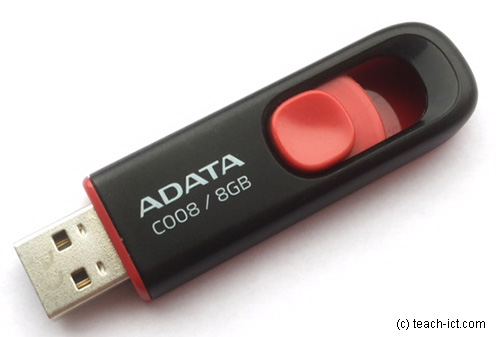Data transmission
2. Serial transmission
This means data is transmitted one bit at a time. A single wire is used for the transmission, or a single strand of fibre-optic cable.

The advantage is that it is cheap and it is effective over long distances. An example of serial transmission is the USB or Universal Serial Bus.
Bits are transmitted with a fixed interval between each one. This sets the bit rate. It depends entirely on the devices either end of the cable as to how high the bit rate can be. For example the USB 3.0 standard allows an extremely high speed of up to 5 Gbit/s
As a byte is 8 bits, a single byte is transmitted at 1/8th of the bit rate.
In order to send a byte of data the sending device has to serialize it into a string of bits and the receiving device has to take the string of bits and convert them back into a byte. There are standard electronic chips that can do this serial-parallel conversion.
A USB memory stick or 'thumb drive' is an example of a serial communication device.

USB cables are widely used to allow devices to communicate with one another. For example connecting a camera to a computer allows its photos to be downloaded and stored.
